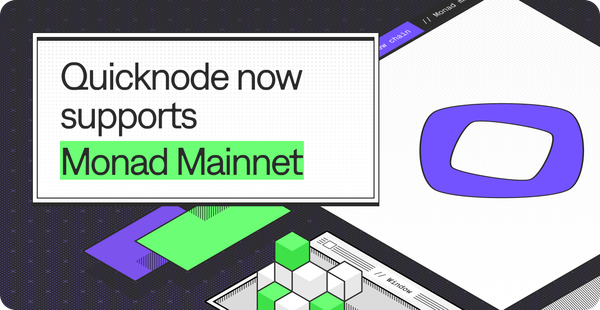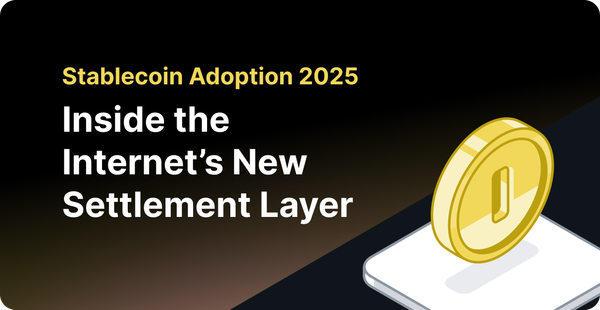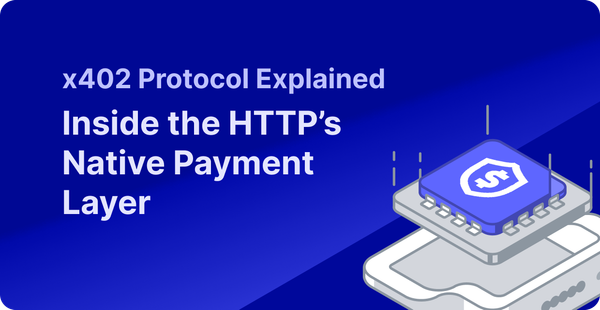Ethereum Fusaka Upgrade: What You Need to Know
PeerDAS reduces data load, blob targets rise, fees stabilize. Cheaper, faster L2s and simpler ops for node operators starting Dec 3, 2025.

Ethereum’s next hard fork, Fusaka (Fulu + Osaka), arrives on December 3, 2025. It’s a post-Pectra upgrade focused on scalability and network efficiency, introducing major architectural improvements rather than visible UX changes.
At its core, Fusaka adds PeerDAS for scalable blob data availability, introduces Blob-Parameter-Only (BPO) forks for flexible capacity increases, stabilizes blob base fees, and implements new safety limits to keep the network decentralized as throughput grows.
In short, Fusaka is Ethereum’s infrastructure tune-up, a collection of about a dozen EIPs that make the protocol faster, leaner, and cheaper to use, especially for Layer-2 networks like Arbitrum, Optimism, and Base, which now handle the majority of Ethereum activity.
TL;DR of Fusaka Upgrade
- PeerDAS (short for Peer Data Availability Sampling) dramatically reduces the data that nodes need to check, enabling up to an 8x increase in data space over time. Cheaper L2 data leads to cheaper L2 transactions.
- Blob-Parameter-Only (BPO) forks let the network raise blob targets incrementally between big hard forks, speeding up L2 capacity increases.
- Safety & performance hardening includes caps on per-transaction gas, tighter MODEXP limits and pricing for certain operations, a 10 MiB RLP block size cap, and history expiry support to keep nodes lean.
- New developer niceties open doors for more efficient and interoperable applications. While secp256r1 precompile enables wallets to use your phone's security (like Face ID), the CLZ opcode makes complex on-chain math cheaper for advanced apps.
- A new tool for node operators (eth_config) to easily verify their settings are correct for the upgrade, ensuring a smoother rollout.
- Timeline: Testnets run through October 2025 (Holesky on Oct 1, Sepolia on Oct 14, Hoodi on Oct 28), with a mainnet launch targeting December 3.
Fusaka Activation and BPO Fork Schedule
Ethereum’s Fusaka upgrade rolls out across three major testnets, Holesky, Sepolia, and Hoodi, before mainnet activation. Each testnet receives Fusaka followed by Blob Parameter Only (BPO) forks, which gradually increase blob capacity.
Fusaka Testnet Activation
Blob Parameter Only (BPO) Fork Schedule
Following Fusaka, each network implements two BPO forks to raise the per-block blob target and maximum (10 & 15, respectively). Later BPO stages will push these further to 14 & 21.
How PeerDAS Solves Ethereum’s Data Availability Bottleneck
Now, let's dive deeper into the most significant part of the upgrade. The single most important component of Fusaka is a new technology called PeerDAS (Peer Data Availability Sampling).
The Problem: A Data Traffic Jam
- Layer-2 networks (L2s) work by bundling thousands of transactions and posting a summary of that data back to Ethereum in packages called "blobs".
- Currently, every computer ("node") running Ethereum has to download all of this data to ensure it's valid.
- As L2s become more popular, this creates a huge data bottleneck, making it expensive to run a node and threatening Ethereum's decentralization.
The Solution: PeerDAS (EIP-7594)
- Instead of downloading everything, PeerDAS allows nodes to check just small, random samples of the data.
- By verifying these small samples, a node can be almost 100% certain that all the data is available on the network without having to download it all.
What PeerDAS Brings
- Handles Far More Transactions: PeerDAS could immediately increase the amount of data the network can handle by eight times.
- Cheaper Fees on Layer-2s: With more data space available, competition for that space goes down, which will lead to significantly lower transaction fees for users on L2s.
- Keeps Ethereum Decentralized: With less data to download, running a node becomes more accessible. This opens the door for more participants to join and strengthen the network’s security and decentralization.
The PeerDAS Trade-Off
While PeerDAS is a massive win for scalability, it's worth understanding the trade-offs it introduces by creating a three-tiered system of supernodes, validating nodes, and full nodes.
- The Rise of "Supernodes": While the requirements for the average validator go down, PeerDAS creates a new role for highly capable "supernodes". These are powerful nodes that download and store all the data, not just samples.
- Higher Storage & Bandwidth Needs: The network still needs some nodes to store all the data. These "supernodes" will have significantly higher storage and bandwidth requirements. This role will likely be filled by large-scale operations like RPC providers and major staking services that need access to the full dataset.
- Centralization Concerns: PeerDAS has sparked a healthy debate among core developers about centralization. Some worry it could concentrate the full data layer among a few large players. Others argue it’s a safe and intentional design choice since the network depends on their availability, not their trust. This debate underscores the complex balance between scalability and decentralization in modern network design.
Expanding Ethereum’s Capacity with Fusaka
While PeerDAS tackles the data problem for L2s, Fusaka also expands capacity on the main network itself in two other key ways.
More Space in Every Ethereum Block (EIP-7935)
- What it does: Increases the "gas limit", the amount of computation that can fit in a single block, to a new default of 60 million gas.
- The result: More transactions can be processed directly on the main Ethereum network, boosting its overall capacity.
A Flexible Way to Add More L2 Data Space (EIP-7892)
- The Problem: L2s are growing so quickly that they’re already consuming all available data "blob" space.
- The Solution: Fusaka introduces “BPO” forks. These are small, focused updates that simply increase the number of allowed blobs.
After Fusaka, the blob limit is scheduled to increase in two steps:
Key EIPs in the Ethereum Fusaka Upgrade
Fusaka includes several key improvements for security, performance, and developer tools.
| EIP Number | Title | What It Does |
|---|---|---|
| Core EIPs | ||
| EIP-7594 | Peer Data Availability Sampling (PeerDAS) | Lets nodes check L2 data by sampling, not downloading everything. |
| EIP-7823 and EIP-7883 | MODEXP Bounds and Gas Cost Increase | Raising the cost of a specific function to accurately reflect its heavy computation and avoiding abuse with large inputs. |
| EIP-7825 | Transaction Gas Limit Cap | Prevents a single transaction from hogging an entire block. |
| EIP-7917 | Deterministic Proposer Lookahead | Makes the network more predictable for near-instant L2 confirmations. |
| EIP-7918 | Blob Base Fee Bounded by Execution Cost | Adjusts the blob fee market to maintain price stability during periods of high L1 congestion. |
| EIP-7934 | RLP Execution Block Size Limit | Puts a hard limit on the physical size of a block to prevent spam. |
| EIP-7939 | Count Leading Zeros (CLZ) Opcode | Adds a tool to make complex on-chain math cheaper. |
| EIP-7951 | Precompile for secp256r1 Curve Support |
Enables wallets to use Face ID or fingerprint sensors (passkeys). |
| Other EIPs | ||
| EIP-7892 | Blob Parameter Only (BPO) Hardforks | Creates an easy way to add more L2 data space in the future. |
| EIP-7642 | History Expiry and Simpler Receipts | Lets nodes ignore very old history, for ease of sync. |
| EIP-7910 | eth_config RPC Method |
Adds a tool for node operators to check their upgrade configuration. |
| EIP-7935 | Set Default Gas Limit to 60M | Increases the size of each block on the main network. |
Making the Network Stronger
With all this new capacity, ensuring the network remains stable and secure is paramount. To handle more activity safely, Fusaka adds new safety features that function as network regulators.
- EIP-7825: Puts a cap on how big a single transaction can be, so one user can't clog the whole network.
- EIP-7934: Puts a cap on the total physical size of a block to prevent spam and keep nodes running smoothly.
New Tools for Builders
Beyond scaling and security, Fusaka provides developers with powerful new tools to create more effective apps.
- Log in with Your Phone (EIP-7951): This is a huge step for making crypto easier. It allows apps to use your phone's built-in security, like Face ID or a fingerprint sensor, to approve transactions. This could mean the end of writing down and worrying about seed phrases.
- Near-Instant L2 Confirmations (EIP-7917): This change makes the network more predictable, which allows L2s to give you near-instant confirmation that your transaction is going through.
- Cheaper On-Chain Math (EIP-7939): Adds a new tool that makes complex math operations (used in ZK-proofs and DeFi) much cheaper and more efficient.
Protocol Health and Maintenance
The following EIPs enhance the long-term health of the network and ensure the upgrade itself proceeds smoothly.
- EIP-7910: This EIP introduces a new command (eth_config) that node operators can use to quickly check if their systems are correctly configured for the Fusaka upgrade. It's like a pre-flight checklist for the network, designed to catch errors early and ensure a smooth, coordinated rollout for everyone.
- EIP-7642: This is a housekeeping measure that allows nodes to stop serving very old historical data. It makes it faster and cheaper for new nodes to join the network, supporting long-term decentralization.
The Practical Impact: What Fusaka Means for You
- For Developers & L2 Teams: Fusaka provides cheaper data and new tools, such as passkey support and the new CLZ opcode, which makes complex onchain math more efficient. Together, these updates reduce gas costs and simplify development for applications that use advanced logic or cryptographic proofs.
- For Node Operators: The only thing you need to do is update your software before December 3rd.
- For Users: No action is required. However, you will feel the benefits indirectly through faster and cheaper transactions on L2s. Soon, you'll also see new apps that let you use your phone's biometrics instead of a seed phrase, making crypto much simpler and safer.
What’s Next for Ethereum: The Glamsterdam Upgrade
After Fusaka, the Ethereum roadmap continues with "Glamsterdam," scheduled for 2026. This next upgrade, named by combining "Glamour" and the Devcon city "Amsterdam", will further advance Ethereum's scalable, secure, and sustainable future, though specific details are yet to be determined.
About QuickNode
QuickNode provides the tools and resources builders need to create incredible products. With a globally balanced infrastructure, guaranteed reliability, a user-friendly interface, and end-to-end customer support, QuickNode enables enterprises to rapidly bring their ideas to life on the blockchain.





